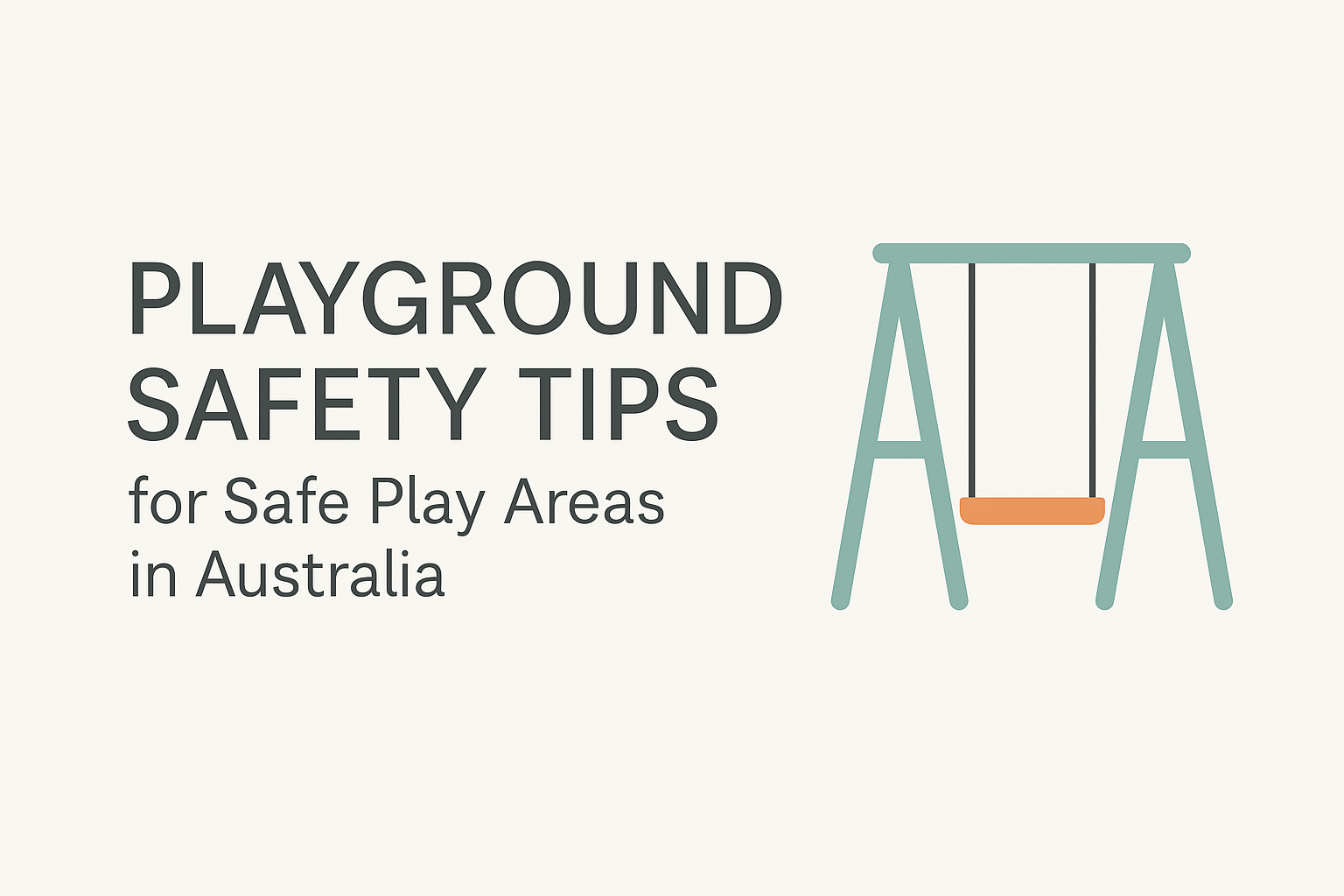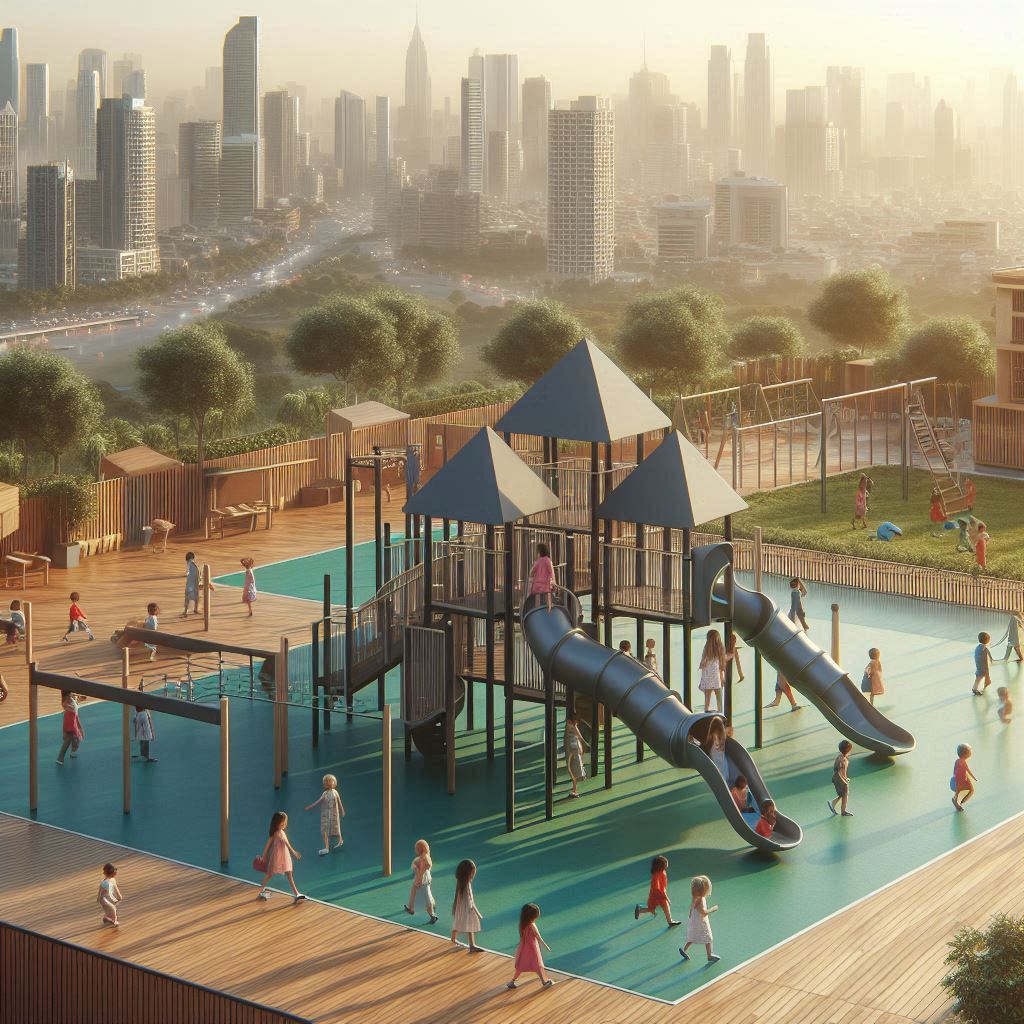Playgrounds are a cornerstone of childhood, providing kids with opportunities to develop physically, socially, and cognitively. However, ensuring that these play areas are safe is a top priority for parents, schools, and community centers. Whether you’re setting up a backyard play space or managing a public playground, following essential safety guidelines will help prevent injuries and create a secure environment where children can explore and have fun.
In the following content, we will cover crucial playground safety tips for Australian families, schools, and businesses. From proper installation to ongoing maintenance, these strategies will ensure your playground remains a safe and exciting space for kids of all ages.
Choose Age-Appropriate Playground Equipment
Understanding Equipment Design for Different Age Groups
Children’s play needs and physical abilities vary by age, so choosing the right playground equipment is crucial:
- Toddlers (1-3 years) – Should have play equipment under 1 meter high, including low slides, small climbing structures, and baby swings with safety harnesses.
- Preschoolers (3-5 years) – Can handle slightly more complex equipment such as small rock walls, rope bridges, and moderate slides up to 1.5 meters.
- School-age children (6-12 years) – More challenging equipment like monkey bars, climbing walls, and higher slides can be introduced, with structures reaching up to 2 meters.
Ensuring that play equipment aligns with the right age group minimizes the risk of falls and injuries while still offering engaging challenges.
Labeling and Zoning
For public and school playgrounds, it’s essential to have clearly marked zones indicating which equipment is best suited for different age groups. This ensures that younger children are not attempting to use equipment designed for older kids, reducing accident risks.
Install Safe Playground Surfacing
One of the most critical factors in playground safety is the surface beneath the equipment. Falls are a common cause of playground injuries, but using impact-absorbing materials can significantly reduce harm.
Best Playground Surfacing Options:
- Rubber Mulch or Tiles – Provides excellent impact absorption, is durable, and requires minimal maintenance.
- Synthetic Grass or Turf – Soft, easy to maintain, and aesthetically pleasing.
- Sand or Pea Gravel – A natural option but requires regular raking to maintain depth.
- Engineered Wood Fiber (EWF) – A budget-friendly choice offering good shock absorption.
Unsafe Surfaces to Avoid:
- Concrete, asphalt, or hard-packed dirt – These surfaces do not absorb impact and pose a high risk of injury.
For optimal safety, loose-fill materials like rubber mulch and engineered wood fiber should be at least 300mm deep around play equipment.
Regular Playground Inspections & Maintenance
Conducting Routine Safety Checks
To maintain a safe play area for children, regular inspections should be carried out. Look for:
- Loose or broken parts – Ensure bolts, screws, and fasteners are secure.
- Wear and tear – Inspect ropes, chains, and wooden structures for signs of deterioration.
- Rust or corrosion – Particularly on metal equipment exposed to outdoor elements.
- Trip hazards – Check for protruding roots, rocks, or damaged surfacing materials.
Schedule Professional Inspections
For community and school playgrounds, scheduling an annual safety inspection with a certified playground safety auditor ensures compliance with Australian playground safety standards (AS 4685).
Proper Equipment Anchoring & Stability
Why Anchoring Matters
Unstable play structures pose a serious risk of tipping over during use. All playground equipment should be securely anchored to the ground following the manufacturer’s recommendations.
Best Anchoring Methods:
- Concrete footings – Ideal for swing sets and large climbing structures.
- Ground stakes or bolts – Used for smaller playsets and freestanding elements.
- Buried posts – Ensuring posts are set deep enough prevents wobbling over time.
Regularly checking that equipment remains firmly in place will prevent unexpected movement that could lead to injuries.
Sun Safety & Weather Considerations
UV Protection
Australia’s sun can be extremely harsh, increasing the risk of burns from overheated playground equipment. To protect children from excessive sun exposure:
- Install shade structures – Shade sails, pergolas, or tree coverage provide natural UV protection.
- Use UV-resistant materials – Some playground equipment is specifically designed to resist heat absorption.
- Apply sunscreen & encourage hats – Kids should wear sunscreen and hats during outdoor play.
Weather Precautions
- Avoid using metal slides or climbing bars during peak summer hours to prevent burns.
- After rain, ensure play surfaces are dry to prevent slips and falls.
- Secure any lightweight play structures before storms or high winds.
Encourage Safe Play Habits
Teach Kids Playground Safety Rules
Educating children about safe play habits can significantly reduce injuries. Teach them:
- No pushing or rough play on slides and swings.
- Always hold onto railings and grips while climbing.
- Take turns and wait for others to clear equipment before using it.
- Sit properly on swings and slides – no standing or jumping off.
Proper Clothing for Play
To avoid accidents:
- Remove drawstrings from jackets or hoodies (they can catch on equipment).
- Choose closed-toe shoes for better grip and foot protection.
- Avoid necklaces, scarves, or other loose accessories that could become hazards.
Fencing & Supervision for Extra Safety
Installing Playground Fencing
For backyard play areas and public parks, fences create a safe boundary that prevents kids from wandering into dangerous areas such as roads or water hazards.
- Ensure fencing is at least 1.2m high for optimal security.
- Gates should have childproof latches to prevent unauthorized access.
The Role of Adult Supervision
Active supervision is key to preventing playground injuries. Caregivers should:
- Stay within arm’s reach of young children.
- Observe kids on climbing equipment or swings to assist if needed.
- Encourage older kids to be mindful of younger ones playing nearby.
Follow our steps and Creating Safer Play Areas for Australian Kids
Playgrounds are wonderful spaces for children to grow, explore, and develop essential skills. By following these playground safety tips, Australian families, schools, and businesses can create safe and engaging play environments that minimize risks while maximizing fun.
At Playground Equipment Australia, we provide high-quality, safety-compliant play structures that prioritize durability, fun, and security. Browse our collection of premium playground equipment at https://playground-equipment.com.au/ and take the first step toward a safer, more enjoyable play experience for your kids.
Got questions? Contact us today for expert advice on setting up a safe playground in your home, school, or community!


